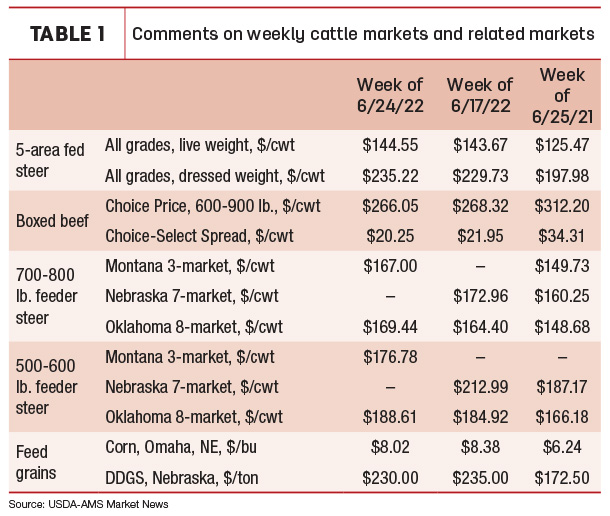The latest USDA Cattle on Feed report reported another record number of cattle on feed for June 1 at 11.846 million head.
That was 142,000 head more than in June 2021. While a record for the month, following a number of monthly record-large on-feed numbers, it’s worth recognizing that the total number of cattle on feed is declining and has been since February. The decline in cattle on feed is fairly normal, but it usually really ramps up after June. Over the 2016-20 five-year average, the number of cattle on feed has declined 542,000 head from June to September. Last year, on-feed numbers declined 630,000 head over the same period. Typically over the summer months, on-feed numbers decline as placements moderate and marketings grow.
More lighter weight cattle were placed, under 700 pounds, while fewer heavier cattle were placed. The result was a 2.1% decline in total placements. Half of the increase in lightweight placements were in Texas. Each of the weight categories heavier than 699 pounds were below a year ago. Over 700-pound placements declined 5.5% from last year.
Marketings were 2.6% greater than last year in May. While the year-over-year increase is positive for overall market conditions, daily average marketings might also be considered a little disappointing. There was one more slaughter day in May compared to last year resulting in a 5% increase in “slaughter days” but a smaller increase in actual slaughter.
What to watch for in next month’s report? The quarterly number of heifers on feed will be released and that will mean more evidence of herd liquidation, which reflects how there continues to be record-large numbers of cattle on feed given a smaller cow herd. The total number of cattle in feedlots should begin to decline sharply. Will the current trend of increasing lightweight placements continue?

The markets
Dressed weights have been declining seasonally for steers and heifers. Compared to a year ago, steer and heifer dressed weights are 3 pounds lighter and 3 pounds heavier than a year ago, respectively (Table 1). The latest data is through June 11, so it will take a little more time to begin to see the full effects of this most recent heat wave on weights and quality grades. Cattle dressed weights are below a year ago, largely due to cows (629 pounds dressed) that were 12 pounds below this point last year. Both the weekly average Choice and Select cutout finished slightly below the week before.
This originally appeared in the June 27, 2022, Livestock Marketing Information Center In the Cattle Markets newsletter.
-
David P. Anderson
- Livestock Economist
- Texas A&M AgriLife Extension Service








